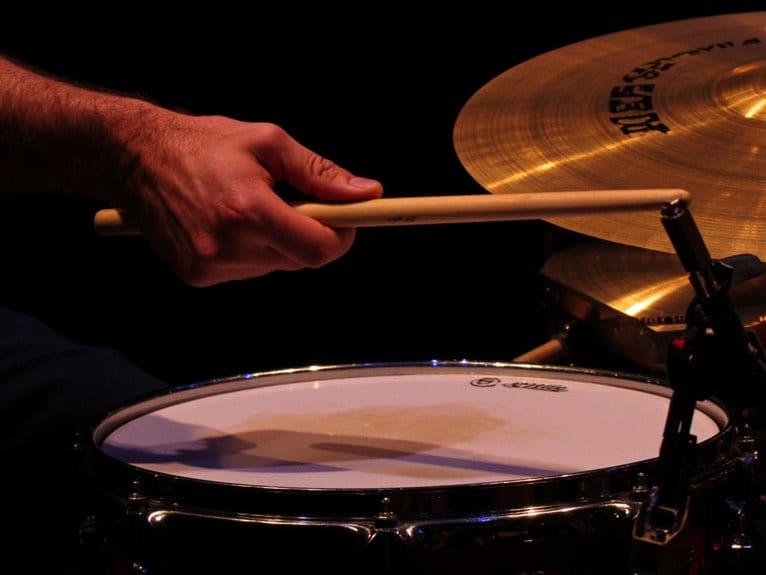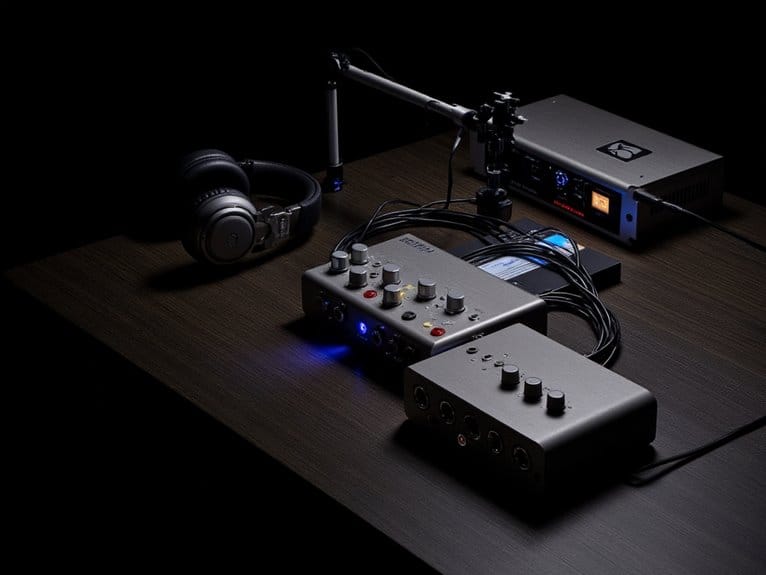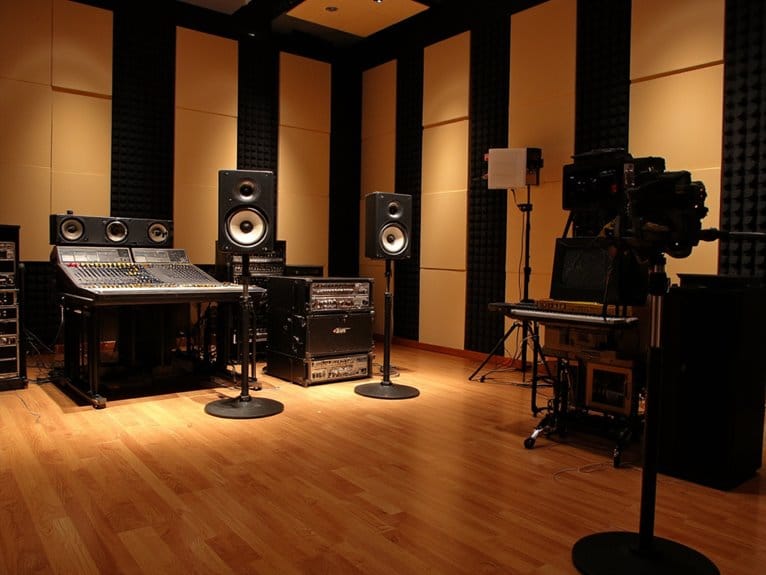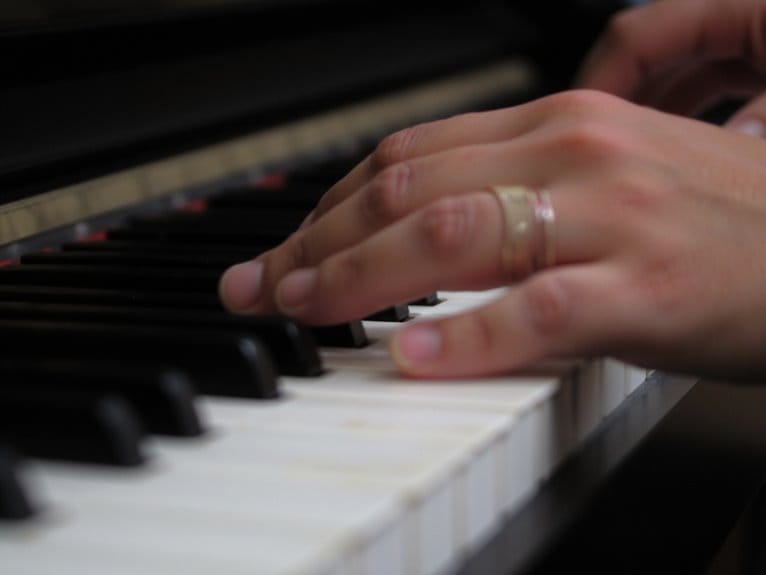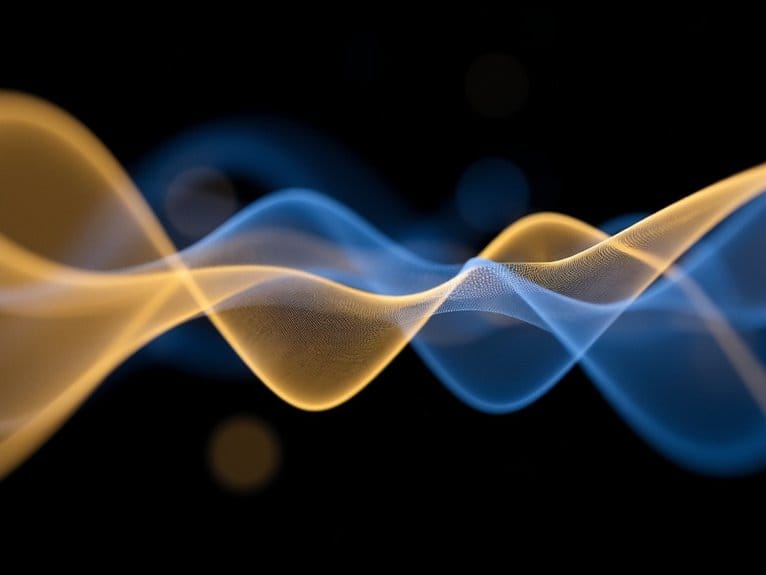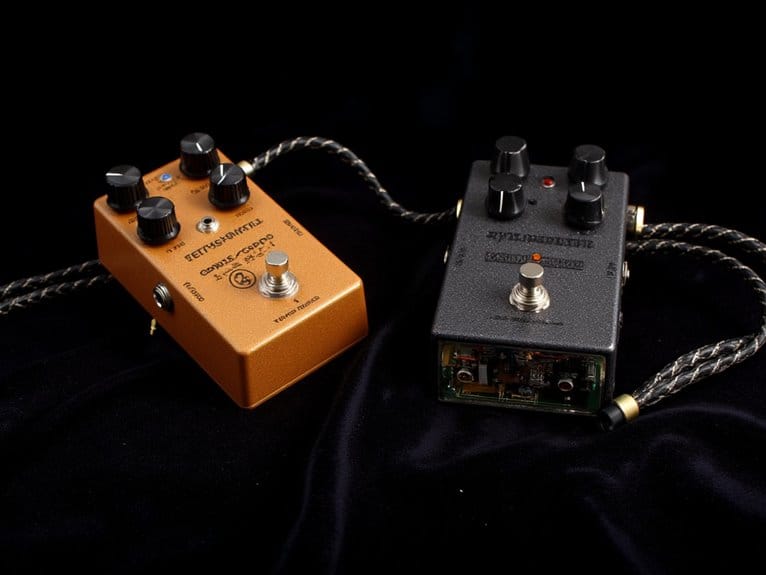Ghost Notes: The Secret to Groove
Ghost notes are rhythmic elements without discernible pitch that you’ll produce through muted, subtle sounds while maintaining precise timing, creating the percussive textures that transform mechanical beats into engaging grooves. You’ll find these techniques across drums, bass, and guitar, where light taps, finger positioning, and palm muting generate rhythmic variation that fills spaces between beats, adding propulsion without increasing volume while creating that danceable feel professional musicians rely on. Master these whispered rhythms, and you’ll discover advanced techniques that elevate your musical expression.
We are supported by our audience. When you purchase through links on our site, we may earn an affiliate commission, at no extra cost for you. Learn more.
Notable Insights
- Ghost notes are subtle, muted rhythmic elements that add percussive texture without discernible pitch to enhance musical groove.
- They fill spaces between main beats, transforming mechanical timing into engaging, danceable rhythmic layers that propel the music forward.
- Effective ghost notes require precise dynamic control and dedicated practice across instruments like drums, bass, and guitar.
- These rhythmic whispers create complex grooves that engage listeners emotionally while maintaining the underlying pulse and feel.
- Ghost notes emphasize the musical intersection of sound and silence, turning simple patterns into intricate, compelling rhythmic expressions.
What Are Ghost Notes and How Are They Produced?
Ghost notes represent one of music’s most fascinating contradictions-they’re notes that aren’t really notes, at least not in the traditional sense we’ve come to expect.
Ghost notes embody music’s beautiful paradox-rhythmic elements that exist in the spaces between sound and silence, felt rather than heard.
When you’re looking at the ghost notes definition, you’ll discover these rhythmic elements maintain timing without delivering discernible pitch, creating percussive textures that enhance groove rather than melody.
I’ve found that production techniques vary greatly across instruments, though the principle remains consistent: you’re creating muted, subtle sounds that provide rhythmic foundation.
On string instruments, you’ll lightly strike strings without fully pressing them to the fretboard, often using palm muting or fingertip tapping. Drummers play them softly between main beats.
The Rhythmic Magic: How Ghost Notes Transform Groove and Feel
Listening carefully to any great funk bassist or jazz drummer, you’ll notice something extraordinary happening between the obvious beats-a subtle rhythmic layer that transforms mechanical timing into something that breathes, pulses, and practically begs your body to move.
These ghost notes create rhythmic variation through barely audible whispers that fill spaces between accented hits, turning simple patterns into complex, compelling grooves that engage your subconscious mind.
The magic lies in their subtle dynamics, which provide vital breathing space within rhythmic frameworks while maintaining groove integrity.
You’ll find that ghost notes add propulsion and momentum without increasing loudness, creating that rolling, swinging feel characteristic of funk and jazz.
They serve as pickup notes leading into stronger accents, enhancing musical phrasing while evoking movement that makes music irresistibly danceable and emotionally resonant.
Just as professional performers rely on clear audio quality to deliver their musical expression without interference, ghost notes depend on precise dynamic control to maintain their effectiveness in the mix.
Capturing these nuanced dynamics requires zero-latency monitoring to ensure that musicians can hear and respond to these subtle rhythmic elements in real-time during recording sessions.
Mastering Ghost Notes Across Different Instruments
Understanding the theoretical beauty of ghost notes means little if you can’t execute them properly on your instrument, and I’ve learned through years of practice that each instrument family demands its own unique approach to achieving that elusive whisper-soft articulation.
Mastering these ghost note techniques requires dedicated focus on dynamic control, where expressive rhythms emerge from subtle variations in touch and timing.
Here’s what I’ve discovered works best across different instruments:
- Drummers should practice light stick taps with minimal bounce, focusing on sixteenth-note subdivisions between backbeats.
- Bass players need to perfect finger positioning that rests lightly on strings without pressing to the fretboard.
- Guitarists must develop palm muting combined with fingertip tapping to create varied textures.
Each technique demands patience and precision to balance assertiveness with restraint.
On a final note
You’ve now revealed the subtle art of ghost notes, those whispered rhythmic accents that separate amateur players from seasoned musicians. Whether you’re laying down bass lines, crafting drum patterns, or adding guitar texture, these understated dynamics will transform your playing from mechanical to magnetic. Don’t expect overnight mastery-I’ve watched countless students struggle initially-but once you’ve internalized ghost note placement, you’ll discover that groove isn’t about what you play loudly, but what you hint at quietly.

